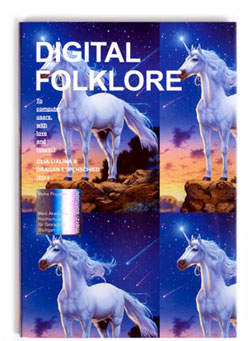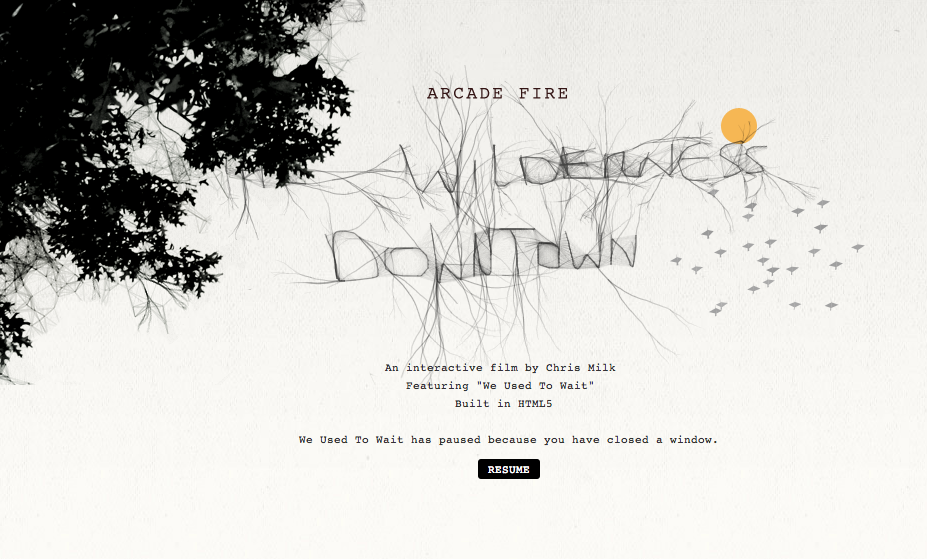Chapter 4 – The Colour of Beauty
Kategorie: Allgemeines
Digital Folklore
Generation C + Folk + Kitsch + Postirony
Digital Folklore – Intro
Digital Folklore – Defriending the Web
via Corner College
Post-irony is real, and so what?
Written by Matthew Collins
Depending on how much time you spend on the Internet, you might be familiar with the rap group Die Antwoord, a South African group which calls itself alternately “next level rap-rave” and “Zef rap” and whose members sport some preposterous haircuts. Die Antwoord, or “The Answer,” as their name translates to English, has left many stymied. Why, exactly? Because, despite how ridiculous they seem, they’re actually pretty damn good.
Die Antwoord are just one of many pop culture phenomena that have recently complicated our understanding of irony. With a proud “who cares?” attitude, recent trends in pop culture—like Tao Lin’s literature and last fall’s The Bad Lieutenant: Port of Call New Orleans—make it difficult to separate irony from sincerity.
Historically, this makes sense. Irony, so long a tool of the underground, is often tied closely to authenticity. An “authentic” person—someone who earned this title through certain signifiers (keffiyehs, tight jeans, etc.)—doing something decidedly “inauthentic” (listening to N*Sync) made for the best sort of late-90s/early-00s irony. In general, pop culture in the 1990s was pretty awful—resulting from attempts to make good products through big budgets, but without the soul that made first-wave pop so appealing (compare Michael Jackson’s Thriller to HIStory). In this climate, authenticity mattered. In the 00s, though, the underground unironically fell in love with a certain former N*Sync member and the mainstream learned who Wes Anderson was. Authenticity has gone by the wayside, and overt irony with it.
What we’re left with today is often called “post-irony,” although the term „Post-irony is real, and so what?“ weiterlesen
Authentizität 2.0
schöne Verschränkung von Generation C + Postironie:
Chris Milk’s Musicclip für Arcade Fire! Gib deine Adresse ein und wird Teil. la réalité dépasse la fiction..
The Tree of Life
will 2011 finally be a Malick year?
Synopsis: From Terrence Malick, the acclaimed director of such classic films as Badlands, Days of Heaven and The Thin Red Line, The Tree of Life is the impressionistic story of a Midwestern family in the 1950’s. The film follows the life journey of the eldest son, Jack, through the innocence of childhood to his disillusioned adult years as he tries to reconcile a complicated relationship with his father (Brad Pitt). Jack (played as an adult by Sean Penn) finds himself a lost soul in the modern world, seeking answers to the origins and meaning of life while questioning the existence of faith. Through Malick’s signature imagery, we see how both brute nature and spiritual grace shape not only our lives as individuals and families, but all life.
Mindmap Ironie vs. Postirony
Watchlist: Jeffrey Augustine Songco

“GayGayGay Robe”


“Sketches for protest signs”
Jeffrey Augustine Songco bereitet gerade seine Ausstellung vor und hat schon ein paar wunderbare Skizzen für Protestschilder gemalt – die sich natürlich auf die absurden Hassbilder der Westboro Baptist Church beziehen.
via http://www.rebelart.net/diary/watchlist-jeffrey-augustine-songco/008638/
2012 Time for change
Im Ernst
(aus dem Ausstellungskatalog „Neues Rheinland. Die postironische Generation„)
Im Ernst
von polemischer Ironie zu postironischer Vernetzung in der Kunst des Rheinlands und überhaupt
von Jörg Heiser
Sigmar Polke fällt einem gleich als erstes ein als ein abwesender Vater der Ironie in der Gegenwartskunst. Abwesend nicht, weil er erst kürzlich und zu früh gestorben ist, sondern weil es für Polke aus zwei Gründen schier unmöglich gewesen wäre, eine solche Vaterschaft anzuerkennen: weil Ironie das offene Bekenntnis zur ironischen Haltung nicht verträgt, den Restzweifel braucht (ist es etwa doch eins-zu-eins ernst gemeint?); und weil dies genau das patriarchale Muster wiederholt hätte, an dem sich Polkes Ironie einmal entzündet hatte. Kaum eine Arbeit Polkes aus den Sechziger Jahren stellt diesen Entzündungsherd so deutlich und buchstäblich vor Augen wie Vitrinenstück von 1966. Um diese Arbeit soll es ausführlicher gehen, bevor weitere exemplarische Werke von Rosemarie Trockel und jüngeren Künstlern der Gegenwart (Monika Stricker, Alexandra Bircken, Manuel Graf) ins Spiel kommen. Was ist der Unterschied zwischen Ironie der Sechziger und Postironie der Gegenwart? Die These ist, grob gesagt, dass dieser Unterschied den Wandel von einer polemisch konfrontativen Konstellation zur entpolemisierten Vernetzungskultur markiert.
*
Eine Vitrine vor drei in leichtem Winkel zueinander aufgestellten Stellwänden – wie ein Altartisch vor Tryptichon mit aufgeklappten Flügeln. Die Vitrine ist von der musealen Sorte, in der man illuminierte Handschriften aufbahren würde; die Stellwände erinnern an Hinweistafeln auf deutschen Ämterfluren. Die formellen Konventionen verstaubter Institutionen also. Doch die Verlautbarung auf der rechten Tafel beinhaltet keine Hinweis auf Sprechstunden, sondern ist – in Versalien – als persönliches Bekenntnis formuliert: „Ich stand vor der Leinwand und wollte einen BlumenstrauSS malen. Da erhielt ICH von höheren Wesen den Befehl: Keinen BlumenstrauSS! Flamingos malen! Erst wollte ich weiter malen, doch dann wusste ich, dass sie es ernst meinten.“ „Im Ernst“ weiterlesen
This is Media Art
das EMAF wirb heuer ganz schön postironisch:





